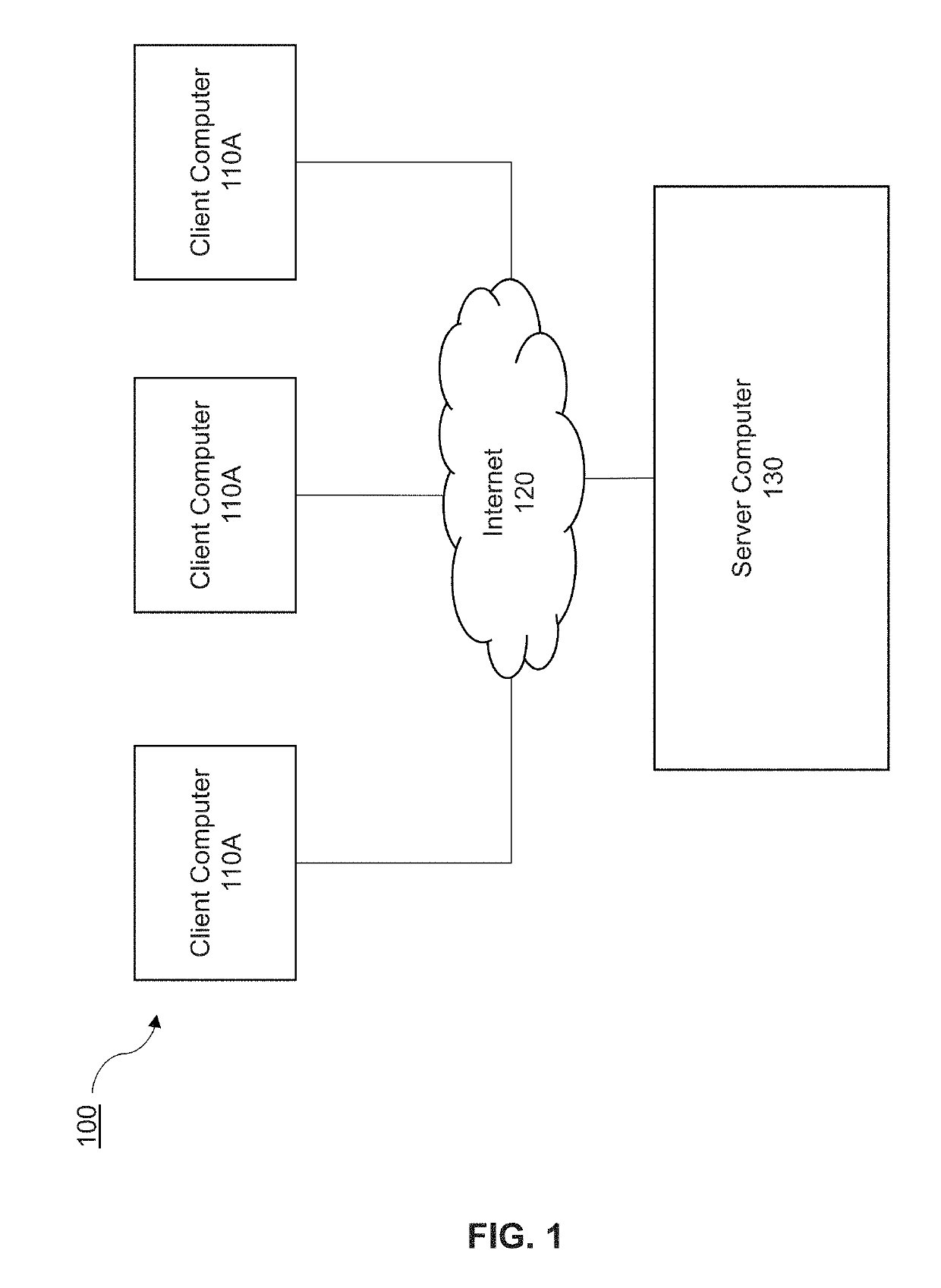Oblivious parallel random access machine system and methods
a random access machine and parallel technology, applied in the field of computer systems and methods, can solve the problems of inadequacies of circuit models, inability to convert “lightweight” optimized programs first into circuits in order to obtain security, and scale the complexity of modern computing tasks at tremendous rates
- Summary
- Abstract
- Description
- Claims
- Application Information
AI Technical Summary
Benefits of technology
Problems solved by technology
Method used
Image
Examples
Embodiment Construction
[0043]FIG. 1 illustrates an exemplary communications network system 100 that may be used to implement the invention, for example as computer code processed by a processor such as one similar to that described in reference to FIG. 2.
[0044]Specifically, the communications network system 100 includes at least one client computer 110A (also referred to as “client”). The client computer 110A may be any device through the use of which a distributed computing environment may be accessed to perform the invention as detailed below, for example, a traditional computer, portable computer, handheld device, mobile phone, personal digital assistant, smart hand-held computing device, cellular telephone, or a laptop or netbook computer, hand held console or MP3 player, tablet, or similar hand held computer device, such as an iPad®, iPad Touch® or iPhone®. More specifically, the client computer 110A may include one or more components as described in reference to the computer system of FIG. 2.
[0045]T...
PUM
 Login to View More
Login to View More Abstract
Description
Claims
Application Information
 Login to View More
Login to View More - R&D
- Intellectual Property
- Life Sciences
- Materials
- Tech Scout
- Unparalleled Data Quality
- Higher Quality Content
- 60% Fewer Hallucinations
Browse by: Latest US Patents, China's latest patents, Technical Efficacy Thesaurus, Application Domain, Technology Topic, Popular Technical Reports.
© 2025 PatSnap. All rights reserved.Legal|Privacy policy|Modern Slavery Act Transparency Statement|Sitemap|About US| Contact US: help@patsnap.com



